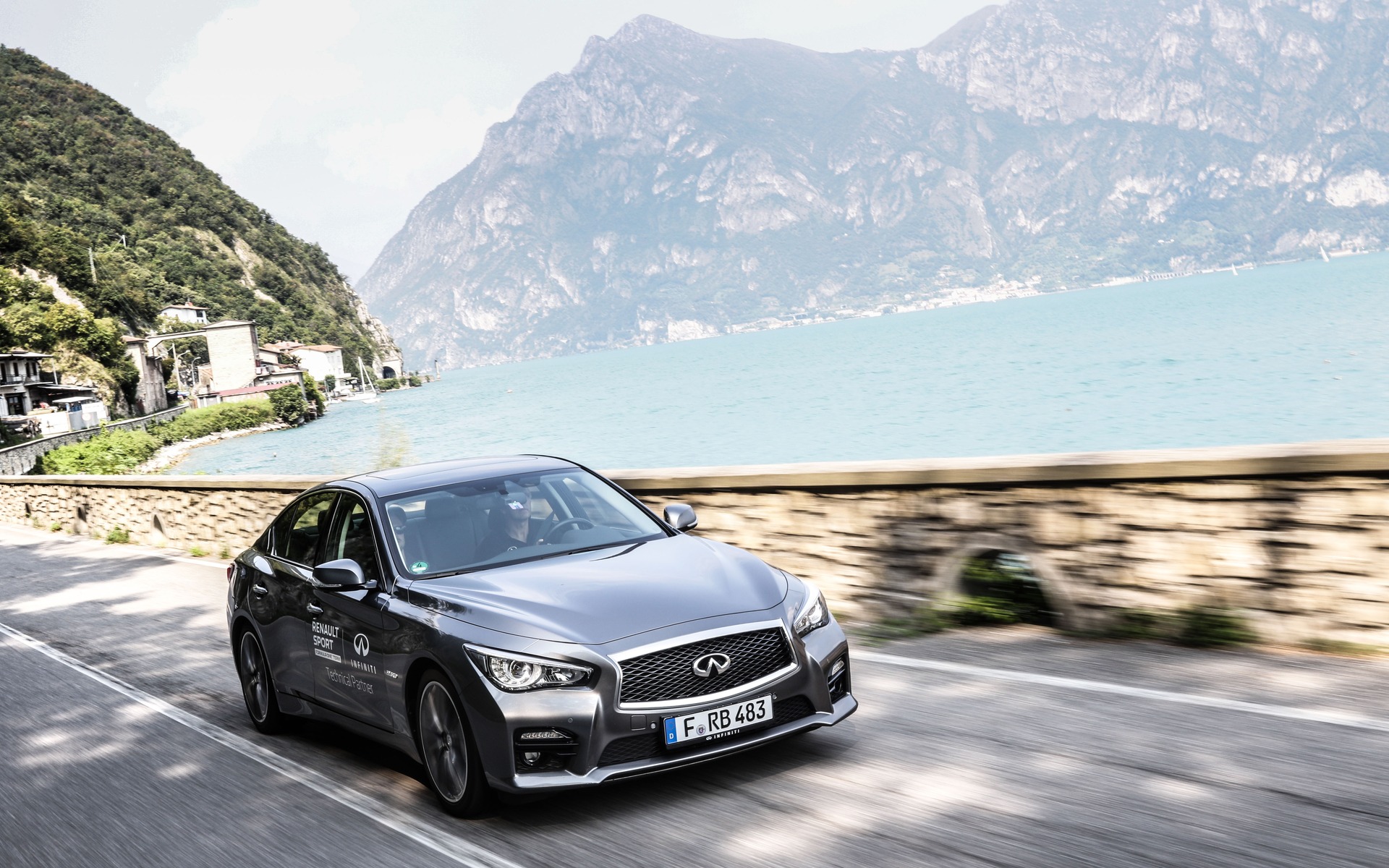2016 Infiniti Q50 Hybrid: Delving into the Unknown


LAGO D’ISEO, Italy – On a trip to the Italian Grand Prix, we seized the opportunity to get reacquainted with the least known member of the Infiniti Q50 range, the Q50 Hybrid, whose sales figures remain confidential, primarily due to its very high cost. With a starting price of $56,400, the Q50 Hybrid stands out as the most expensive version of the Q50, setting buyers back $1,800 more than the recently introduced Red Sport 400 version and its twin-turbo, 400-horsepower V6 engine.
From a technical standpoint, the main difference with the 2016 Infiniti Q50 Hybrid is its electric motor. Developing the equivalent of 67 horsepower and 214 lb.-ft. of torque, it’s sandwiched between the 3.5-litre V6 and the seven-speed automatic transmission that’s paired with all-wheel drive. The total horsepower comes to 360, which is 40 less than the Q50 Red Sport 400.
Read also
The lithium-ion battery that supplies the electric motor has a 50-kilowatt capacity, weighs 49 kg and is located in trunk, reducing its volume to 266 litres. Placing the battery there deprives the Q50 Hybrid of the folding seatbacks that the lineup’s other versions feature. The Hybrid comes with Steer-by-Wire steering, but not the adaptive suspension that equips Q50s with a twin-turbo V6 of 300 or 400 horsepower.
Power
With 258 lb.-ft. of torque from the combustion engine combined with the electric motor’s 214 lb.-ft., the Q50 Hybrid can rip from 0 to 100 in 5.2 seconds, with a highly sustained and very linear thrust in flat-out acceleration. However, when you press the gas pedal in most other situations, this linear acceleration disappears, replaced by a sometimes slightly more jolting ride, as communication between the combustion engine and electric motor isn’t perfectly symbiotic.
So it hits a good stride, but we would have preferred it to be a little smoother and more linear overall, not just at wide-open throttle. As for fuel consumption, we recorded an average of 9.5 litres per 100 kilometres, whereas the manufacturer’s official numbers are 8.7 per 100 kilometres city and 7.6 highway.
In addition to contributing to peak torque, the electric engine also helps the Q50 travel in utter silence at low speeds in urban environments, assuming the energy reserve is sufficient. You’ll have to take it easy on the accelerator though, otherwise you’ll unwittingly solicit the aid of the combustion engine.

A funny feeling
The suspension is rather firm and you’ll feel the road’s small imperfections a little too well. The fact that the Q50 Hybrid is fitted with run-flat tires doesn’t help matters. Unfortunately, the Steer-by-Wire steering provides little feedback to the driver. Sure, it’s adjustable, but it remains very artificial in terms of feel. Switching into Sport mode only increases the effort required to turn the wheel, as though you attached two bungees to it, but the lack of communication persists.
The steering can also be calibrated in Quick mode to make it faster, but then it becomes too fast. This brings us to Standard mode, which is the least confusing. When asked about this subject, François Bancon, Infiniti’s Vice President of Product Strategy, told us that the brand was updating the software that controls the steering “every three months.” Is it still a work in progress? All signs point to yes.
Life on board
With its two colour LCD touchscreens located one above the other, the 2016 Infiniti Q50 Hybrid can continuously display the system navigation map on the eight-inch upper screen, allowing the driver or passenger to interact with the car’s other functions via the seven-inch lower screen.
The aluminum and wood accents give the passenger compartment a certain high-end charm, but the effect is not as nice as what you find aboard an Audi or Mercedes-Benz—specifically, the plastics leave a lot to be desired. As for the look, the Q50’s more expressive silhouette helps it stand out on the automobile landscape while guaranteeing a very good 0.26 drag coefficient.
If our short test drive taught us anything, it’s that there is clearly a lot more ground to cover to reach the summit of the category. We’d like the comfort to be improved and the communication between the driver and the car to be less artificial than it is now. These are two musts in the luxury sport sedan category.








